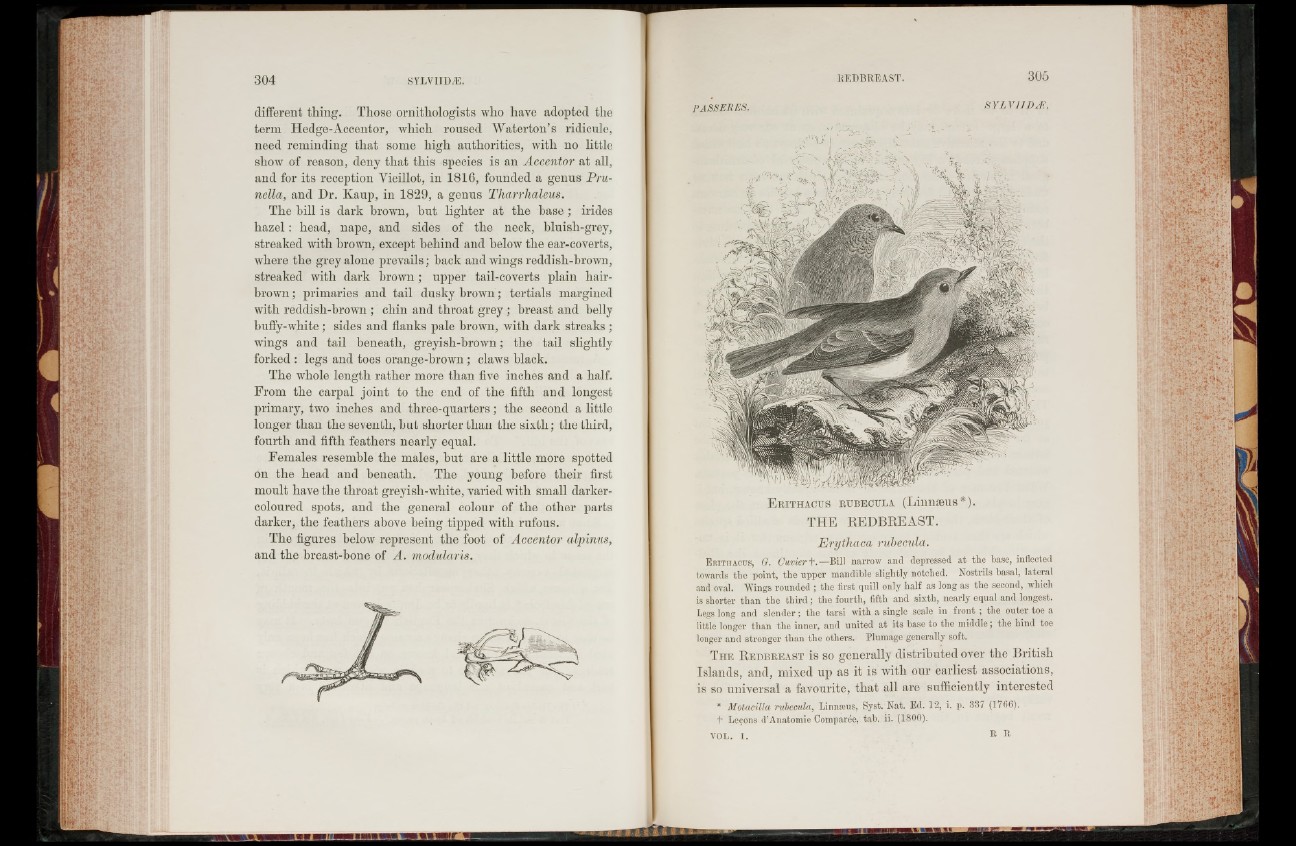
’• {
different thing. Those ornithologists who have adopted the
term Hedge-Accentor, which roused Waterton’s ridicule,
need reminding that some high authorities, with no little
show of reason, deny that this species is an Accentor at all,
and for its reception Yieillot, in 1816, founded a genus Prunella,
and Dr. Kaup, in 1829, a genus Tharrhaleus.
The hill is dark brown, hut lighter at the base ; irides
h a z e l: head, nape, and sides of the neck, bluish-grey,
streaked with brown, except behind and below the ear-coverts,
where the grey alone prevails; hack and wings reddish-brown,
streaked with dark brown ; upper tail-coverts plain hair-
brown ; primaries and tail dusky brown; tertials margined
with reddish-brown ; chin and throat grey ; breast and belly
huffy-white; sides and flanks pale brown, with dark streaks ;
wings and tail beneath, greyish-brown; the tail slightly
forked : legs and toes orange-brown ; claws black.
primary, two inches and three-quarters; the second a little
moult have the throat greyish-white, varied with small darker-
E r it h a c u s r u b e c u la (Linnæus*).
THE REDBREAST.
Tlie figures below represent the foot of Accentor alpinus, Erythaca rubecula.
E r ith a c u s , G. Cuvier f . -—Bill narrow and depressed at tlie base, inflected
towards the point, the upper mandible slightly notched. Nostrils basal, lateral
and oval. Wings rounded ; the first quill only half as long as the second, which
is shorter than the third; the fourth, fifth and sixth, nearly equal and longest.
Legs long and slender ; the tarsi with a single scale in front ; the outer toe a
little longer than the inner, and united at its base to the middle ; the hind toe
longer and stronger than the others. Plumage generally soft.
T h e R e d b r e a s t is so generally distributed over the British
Islands, and, mixed up as it is with our earliest associations,
is so universal a favourite, that all are sufficiently interested
* Motacilla rubecula, Linnæus, Syst. Nat. Ed. 12, i. p. 337 (1766).
t Leçons d’Anatomie Comparée, tab. ii. (1800).
VOL. I. R 11